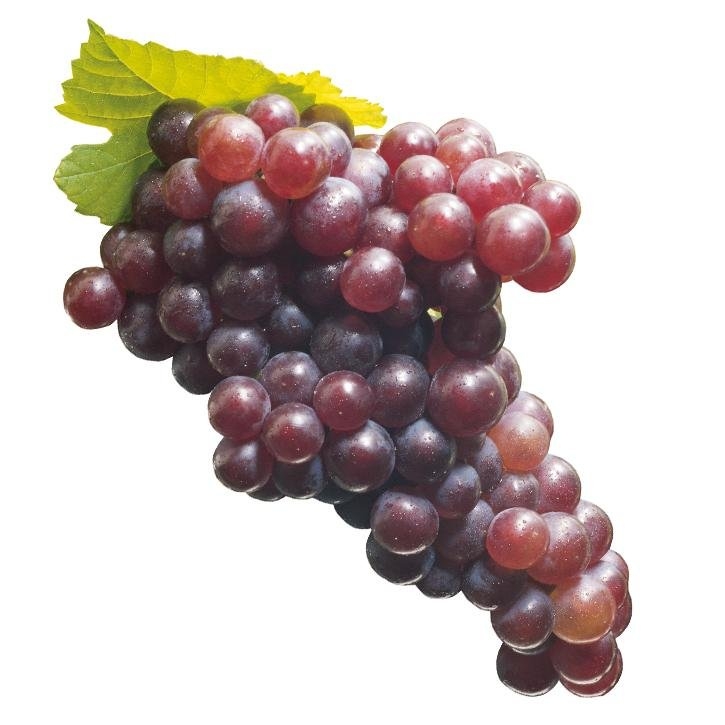Description
It’s a creeping bush with many different variations. The term ‘red grape’ corresponds to the cultivation of dark red grape with red flesh whose foliage gets partially or totally red during the fall. It might grow up to 10 m in height. Trunk is tortuous and the bark is rough and thick. The vine shoots (ligneous branches, thin and flexible that looks for support in nearby objects) are brownish with a spongy brown medulla. Young branches are green with a certain brownish hue and hairless. They sprout from the leaves axil. Nodes are enlarged and somewhat flatten. Alternate palmatiparted leaves. The five lobes show a toothed and irregular edge, narrowing from the base and then connecting at the center. The largest one is the central lobe. They are glabrous and shining above and hairy at the central vein beneath. They petiole is large and cylindrical, grooved and hairy at the lower part. Where the branch is inserted, a couple of brownish membranous stipules of 2 to 3 mm are found. Tendrils sprout at front of leaves and work as climbing tools. They are dichotomous and have stipules, as well.
Inflorescences (panicles) are branched, opposite to the leaves, with membraneous bracts of 4 mm at the insertion. Each of them has many greenish flowers. The pedicel widens at the top with five caducous petals. There are, as well five stamens of greenish anthers and fine filaments. The pistil is bottle-shaped like, with a short style and a wide stigma. It blooms from late May to early July. The fruit (grape) is a berry that varies in color, shape and size depending on the species. They cluster in racemes. Red grape has red flesh and dark red skin. Seeds, up to five held inside, are brownish and pyriform of 5x3 mm.
It is cultivated in the Mediterranean zone. It needs heated places facing south with, preferably, dry soil. In most of the mild weather zones in the planet extensive vineyards can be found. It also grows wild in the Mediterranean zone. (Central Europe, North of Africa and western zone of Asia).
Part used
Leaves. Grapes (mainly as raisins or in juice). Seeds to obtain oil.
Indications
- Gout and obesity might improve with grape juice therapy.
- Hypercholesterolemia and arteriosclerosis: grape seed oil may be used as source of essential fatty acids to balance different serum lipid fractions.
- Varicose veins, phlebitis, hemorrhoids and capillary fragility, due to its vitaminic P action.
- Symptomatic relief of venolymphatic deficiency.
Bibliography
Berdonces i Serra, J. Ll. (2001) Gran Enciclopedia de las Plantas Medicinales. Tikal. Madrid.
Bruneton, J. (2001) Farmacognosia. Fitoquímica. Plantas medicinales. 2ª Edición. Acribia, S.A. Zaragoza.
Cañigueral, S., Vila R., Wichtl M. (1998) Plantas medicinales y drogas vegetales para infusión y tisana. OEMF International. Barcelona.
Chevallier, A. (1997) Enciclopedia de las Plantas Medicinales. Acento. Madrid.
Lastra, J.J., Bachiller L.I. (1997) Plantas medicinales en Asturias y la Cornisa Cantábrica. Trea. Gijón (Asturias).
Vanaclocha B., Cañigueral S. (eds.) (2003) Fitoterapia, Vademécum de Prescripción. Masson. Barcelona.
